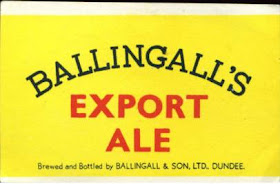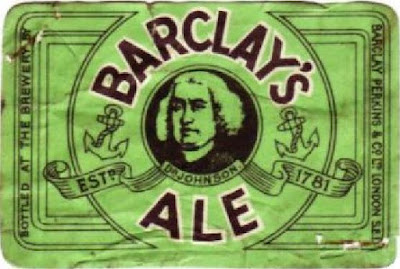Another WW II pub tale. This time about a vicar who sounds like he's stepped out of the pages of Viz. A classic naughty vicar.
The case must have caused quite a stir as this report is in a Coventry newspaper, mikes away from Hampshire where the rector resided.
“Tippling” Accusations:
Rector’s Defence
THE defence of the Rev. Hugo Dominique de la Mothe (54), Rector of Dogmersfleld, Hampshire, opened to-day at the resumed Winchester Diocesan Consistory Court, at Basingstoke.
The accusations brought under the Clergy Discipline Act of 1892, Section 2, were that between June, 1942, and June, 1944, the rector had been frequently drunk, had “resorted to taverns and tippling.” had been guilty of immorality in that on or about May, 1944. at Dogmersfleld, he was in such a drunken condition that he committed a nuisance in the presence of women, and that he made derogatory references to the husband of Mrs. Maggie Robinson, his servant.
Yesterday it was alleged that the rector frequented public-houses and was drunk for the greater part of most days in the week. Mr. Ryder Richardson appears for the Bishop of Winchester and Mr. Stephen Benson defends the rector.
RECTOR’S EVIDENCE
The rector was called to give evidence.
Mr. Benson: Were you generally drunk between June, 1942, and June 1944? —The rector: There is no truth in that.
With regard to resorting to taverns and tippling?—l go to taverns in the first instance to meet my men folk; I can’t meet them in their homes. I do visit the “Barley Mow" both my churchwardens and I meet there in the evening and we talk business. I play billiards or darts with the men. I am member the dart team if I am required. He went to the Queen’s Head when he was chief warden because it. was the A.R.P. headquarters.
PUBLIC HOUSE VISITS
The Rector said that he told the Bishop of Winchester that did not see any harm in visiting public houses, "and unless he gave me a definite order I did not intend to desist.”
Mr. Benson; Have you fallen off your bicycle?
The Rector: I have done in the past, and I am not the only one either. It is a very difficult hill. I have come off once or twice, but it is not a regular habit.
"EXCITED AFTER FAMILY ALTERCATION"
Mr. la Mothe said he was excited after family altercation and distressed, and not suffering from drink, when Dr. Evans gave him an injection in the Queen’s Head when he had a dispute with Mr. Clowes. Mr. Clowes called him "a drunken dipsomaniac.” and he told Clowes, "The best thing for you would be a jolly good hiding.”
The Rector denied he spent one and half hours in some laurels after falling off his bicycle.
Mr. Richardson: Is it true that Clowes tried shoot you? — At any rate, I have been shot at by his gun.
Did he try to shoot you? — Not deliberately. The Rector said the use of one word which he admitted using, but not frequently, "was a habit with real men.”
CHURCH BUSINESS IN PUBLIC-HOUSE Mr. Henry Cole, Rector’s warden since last Easter, said that he had seen the Rector at the Barley Mow once or twice weekly by chance, or to discuss business, and they had drinks together. He had never seen the Rector drunk.
Mr. Richardson: Do you find a public-house a good place to discuss church business? — I can’t say I do.
Mr. Walter Charles Trimmer, people’s warden for 13 or 14 years, said that had seen the Rector the Barley Mow. but not often; they met by chance there. (Proceeding)
Coventry Evening Telegraph - Saturday 25 November 1944, page 8.
There are some intriguing hints about the rector's behaviour. What did Dr. Evans inject him with in the Queen’s Head? What was his dispute with Mr. Clowes?
I'm guessing that the word "real men used" was fuck.
Rev. de la Mothe sounds quite a fun bloke. I wonder what happened to him?
You've probably noticed that the Barley Mow is still around. So is the Queen’s Head, too.
. . .
Just been for a walk. Thinking about this case as I plodded along, A couple of things struck me. But that didn't deter me from continuing on my way. When I thought a couple of things.
Like, what does that phrase "commit a nuisance in the presence of women" mean? Did he drop his kecks? It's a very odd way to describe something. Can't be anything other than a euphemism.
Another strange turn of phrase is when the rector says: "I have been shot at by his gun". Why avoid saying who pulled the trigger? Unless it was his wife.
Oh, and if the rector played on the pub's darts team, he must have been a regular there.
Yet another thing. Why did the rector usually drink in the Barley Mow? The Queen's Head is only a 7-minute walk from the church (according to Google Maps). While the Barley Mow is 21 minutes away.
I've dug a bit deeper and have found out more about the foul-mouthed, drunken vicar.






















